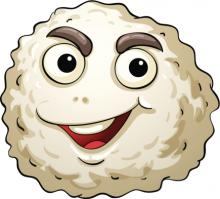 An international team of researchers has found a yeast microbe called S. pombe that is capable of rejuvenating every time it reproduces as long as conditions are right. The study, published in the journal Current Biology, provides fundamental insights into the mechanisms of aging and could potentially serve as a model of certain non-aging types of cells in humans.
An international team of researchers has found a yeast microbe called S. pombe that is capable of rejuvenating every time it reproduces as long as conditions are right. The study, published in the journal Current Biology, provides fundamental insights into the mechanisms of aging and could potentially serve as a model of certain non-aging types of cells in humans.
A release from the University of Bristol where some of the research was done reports that when the yeast is treated well, it reproduces by splitting into two halves that both inherit new as well as old cell material. The result is that both halves continue to live. In contrast, others organisms split by giving one half of the cell the old material and the other half the new material so that the old cell dies. Talking about S. pombe, lead investigator Iva Tolics aid, "As both cells get only half of the damaged material, they are both younger than before". At least in a sense, the yeast is rejuvenated a bit, every time it reproduces.
However, S. pombe can only escape aging if it keeps dividing fast enough. The team wanted to find out what would happen if it were treated badly. They exposed the yeast to heat, ultraviolet radiation, and damaging chemicals, which slowed its growth to a point where the microbes could not divide fast enough to stay young. Once subjected to these negative influences, the yeast cells started splitting into a younger and an older half just as other cells do. While the older cells eventually died, their offspring survived long enough to reproduce even in the harsh environments.
Consequently, although S. pombe can age in the same way that other organisms do when it has to, it can escape aging when times are good. "The cells manage this switch by cleverly exploiting the laws of physics," added Dr. Thilo Gross, from the University of Bristol's Department of Engineering Mathematics, who supervised some of the modeling and data-analysis work on the project. "That microbes age is in itself surprising and it is amazing to see that even such simple organisms have evolved very powerful strategies to survive."
 Dzobak Volodymyr
РОЗДУМИ ПРО НАДВАЖЛИВЕ або ЧОМУ НАШІ ОЛІГАРХИ СТАЛИ МОГИЛЬЩИКАМИ НИНІШНЬОЇ УКРАЇНИ
Dzobak Volodymyr
РОЗДУМИ ПРО НАДВАЖЛИВЕ або ЧОМУ НАШІ ОЛІГАРХИ СТАЛИ МОГИЛЬЩИКАМИ НИНІШНЬОЇ УКРАЇНИ




 An international team of researchers has found a yeast microbe called S. pombe that is capable of rejuvenating every time it reproduces as long as conditions are right. The study, published in the journal Current Biology, provides fundamental insights into the mechanisms of aging and could potentially serve as a model of certain non-aging types of cells in humans.
An international team of researchers has found a yeast microbe called S. pombe that is capable of rejuvenating every time it reproduces as long as conditions are right. The study, published in the journal Current Biology, provides fundamental insights into the mechanisms of aging and could potentially serve as a model of certain non-aging types of cells in humans.